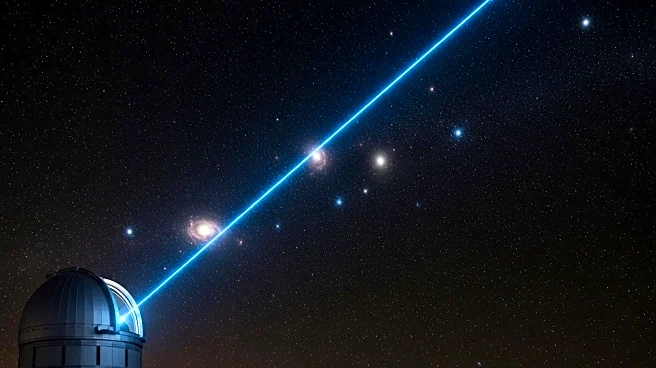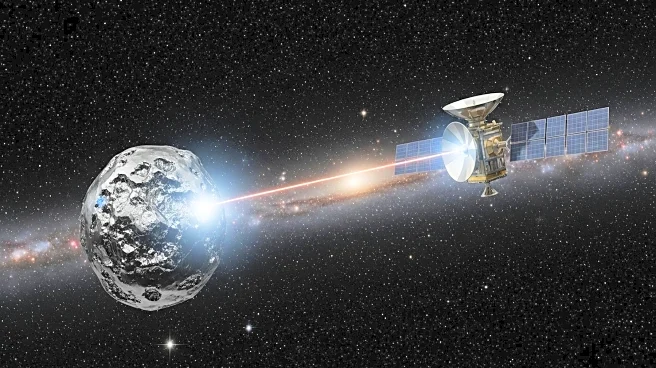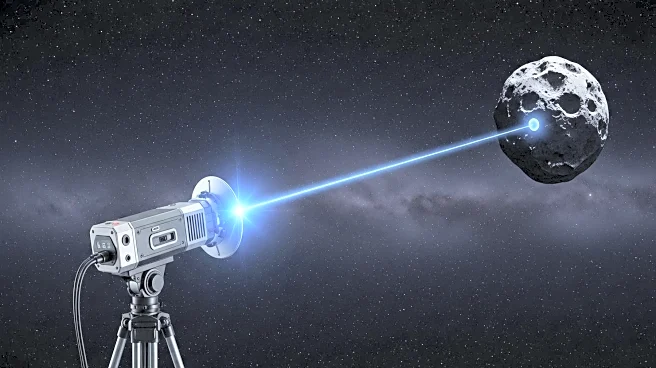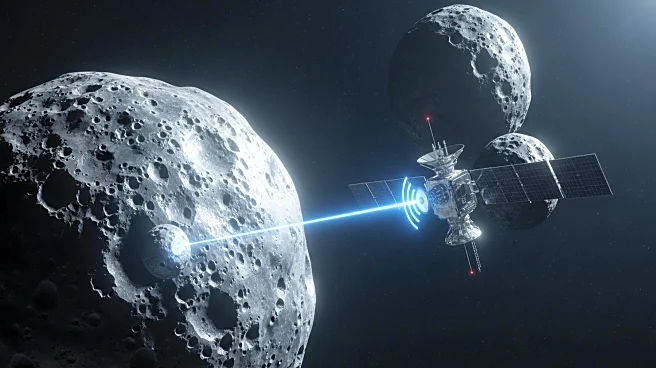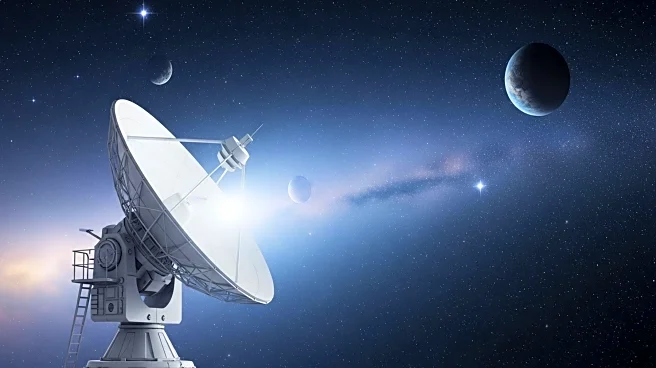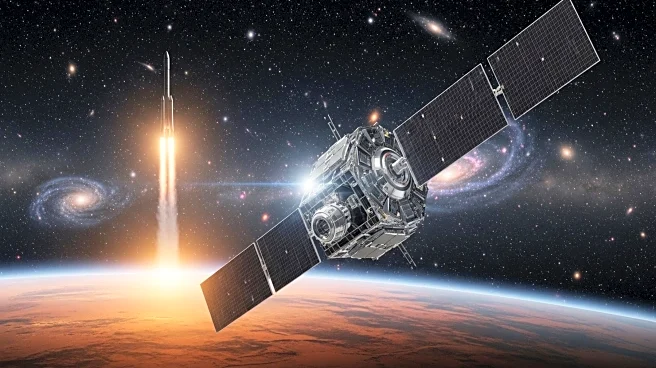What's Happening?
NASA's Jet Propulsion Laboratory (JPL) has successfully demonstrated the Deep Space Optical Communications (DSOC) system by transmitting laser signals to the Psyche spacecraft. The Optical Communications Telescope Laboratory at JPL's Table Mountain Facility in California sent an eight-laser beacon to the DSOC transceiver aboard Psyche, which was 143 million miles from Earth at the time. The experiment involved transmitting data encoded in laser photons over vast distances, with the Hale Telescope at Caltech's Palomar Observatory serving as the primary downlink station. The demonstration completed its final pass on September 2, 2025, successfully sending and receiving signals from 218 million miles away.
Why It's Important?
This successful demonstration marks a significant advancement in space communication technology, potentially revolutionizing how data is transmitted across vast distances in space. The ability to use laser photons for communication could enhance the efficiency and reliability of data transmission for future space missions, including those to Mars and beyond. This technology could lead to faster and more secure communication channels, benefiting scientific research and exploration. Stakeholders such as NASA, Caltech, and the broader scientific community stand to gain from these advancements, which could improve mission outcomes and expand the possibilities for deep space exploration.
What's Next?
Following this successful demonstration, NASA and its partners may explore further applications of laser communication technology in upcoming missions. The technology could be integrated into future spacecraft designs, enhancing communication capabilities for missions to Mars, asteroids, and other distant celestial bodies. Continued research and development in this area could lead to more robust and efficient communication systems, potentially influencing the design and execution of future space exploration projects.
Beyond the Headlines
The use of laser communication technology raises questions about the long-term implications for space exploration and communication infrastructure. Ethical considerations regarding the deployment of such technology, including potential impacts on space debris and interference with other missions, may need to be addressed. Additionally, the success of this demonstration could spur further investment in optical communication technologies, influencing the direction of research and development in the aerospace industry.

